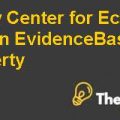Susan Griffin: Formulation of a Long-Term Investment Strategy Case Study Help
Introduction
Diving deep into Susan Griffin's financial situation, we have a unique opportunity to establish an investment strategy tailored to her risk tolerance, financial goals, and investment horizon. Susan is an astute investor with a varied portfolio of assets that she has accrued over time. Taking into account her objectives, current asset allocation, and performance data for different asset classes, we will synthesize an effective strategy below. Our analysis includes a breakdown of Susan's current assets, key financial ratios and returns, and a thorough asset allocation plan optimized for long-term growth and risk management.
Spanning a diverse array of asset classes including equities, bonds, real estate, and commodities, Susan's portfolio is primed for growth. We'll heed historic performance data and cater to her risk tolerance to systematically allocate weightage into each asset class. As a result, her prudent investments are geared to meet her financial goals, thanks to astute diversification. This case study underlines how rational asset allocation is pivotal to attaining sustainable monetary gains and offers a granular blueprint of Susan's investment trajectory.
Problem Statement
The problem at hand involves devising an optimal long-term investment strategy for Susan Griffin, a diligent investor with a diverse portfolio of assets. Susan seeks to align her investments with her financial goals and risk tolerance while optimizing returns and managing risk.
To address this challenge effectively, we must analyze her existing asset allocation, calculate key financial ratios and returns for various asset classes, and provide a comprehensive plan that ensures diversification and long-term growth in her portfolio. The problem statement revolves around formulating a strategy that harnesses historical performance data and meets Susan's financial objectives, ultimately guiding her toward financial success.
Situational Analysis
Long-Term Investment Strategy
The provided data and calculations offer a comprehensive insight into the investment strategy for Susan Griffin. To begin with, Susan has a total investment amount of $10,000,000 to allocate among various assets. The risk-free rate (Rf) is approximately 0.83%. The updated returns and standard deviations for a range of assets, including stocks, bonds, real estate, and commodities, are presented. Notably, these assets exhibit varying levels of returns and risks, making asset allocation a crucial aspect of Susan's investment strategy.
The overall expected rate of return for the portfolio is approximately 6.70%, with the highest weight given to cash due to its low risk. This portfolio aims to balance risk and return, with a focus on income generation and capital growth while considering Susan's long-term investment horizon. It's worth noting that the allocation may be adjusted based on Susan's risk tolerance, financial goals, and market conditions. Diversification remains a key strategy to manage risk effectively. The investment strategy suggests a diversified portfolio comprising several asset classes:
Foreign Bonds: With an expected return of 3.06% and a relatively low standard deviation of 5.86%, foreign bonds provide stability to the portfolio.
High Yield: High-yield assets are expected to yield 6.31% returns with a moderate standard deviation of 4.34%. This allocation can add income and diversity.
Real Estate: Real estate investment, with an expected return of 10.07%, offers an opportunity for capital appreciation. However, it comes with a higher standard deviation of 17.35%, signifying higher risk.
Foreign Stocks: Foreign stocks provide potential for growth with an expected return of 6.26%. The standard deviation is 15.97%, indicating moderate risk.
U.S. Stocks: U.S. stocks, with an expected return of 12.44% and a standard deviation of 17.53%, offer substantial growth potential.
U.S. Bonds: Allocation to U.S. bonds (5.36% expected return) can provide stability to the portfolio.
Cash: The largest allocation is in cash (84.43%). While it offers low returns (0.83%), it also provides liquidity and acts as a haven.
Commodities: Given the negative expected return (-0.11%) and high standard deviation (21.51%), the allocation to commodities is minimal, at 0.00%.
Rely on Investment Income to Cover Financial Needs
It becomes evident that this investment strategy is well-equipped to fulfill Susan Griffin's financial objectives. The strategy's balanced approach, combining various asset classes with varying risk and return profiles, is designed to generate sufficient investment income to support Susan and her family's financial needs. Susan's primary goal is to rely entirely on investment income to maintain a comfortable lifestyle and provide financial assistance to her two children and elderly mother. This strategy aligns with her aspiration.
Susan's investment portfolio is well-positioned to support her family's needs and possibly achieve long-term growth. By allocating assets across different areas like foreign bonds and high-yield investments, she can generate a consistent income. Her portfolio is additionally resilient to market volatility and economic fluctuations due to its diversified nature, which includes real estate, foreign stocks, U.S. stocks, and bonds. This diversification not only ensures Susan's current lifestyle but may also lead to potential growth in her investment portfolio...........
Susan Griffin Formulation of a Long-Term Investment Strategy Case Study Help
This is just a sample partial case solution. Please place the order on the website to order your own originally done case solution.













